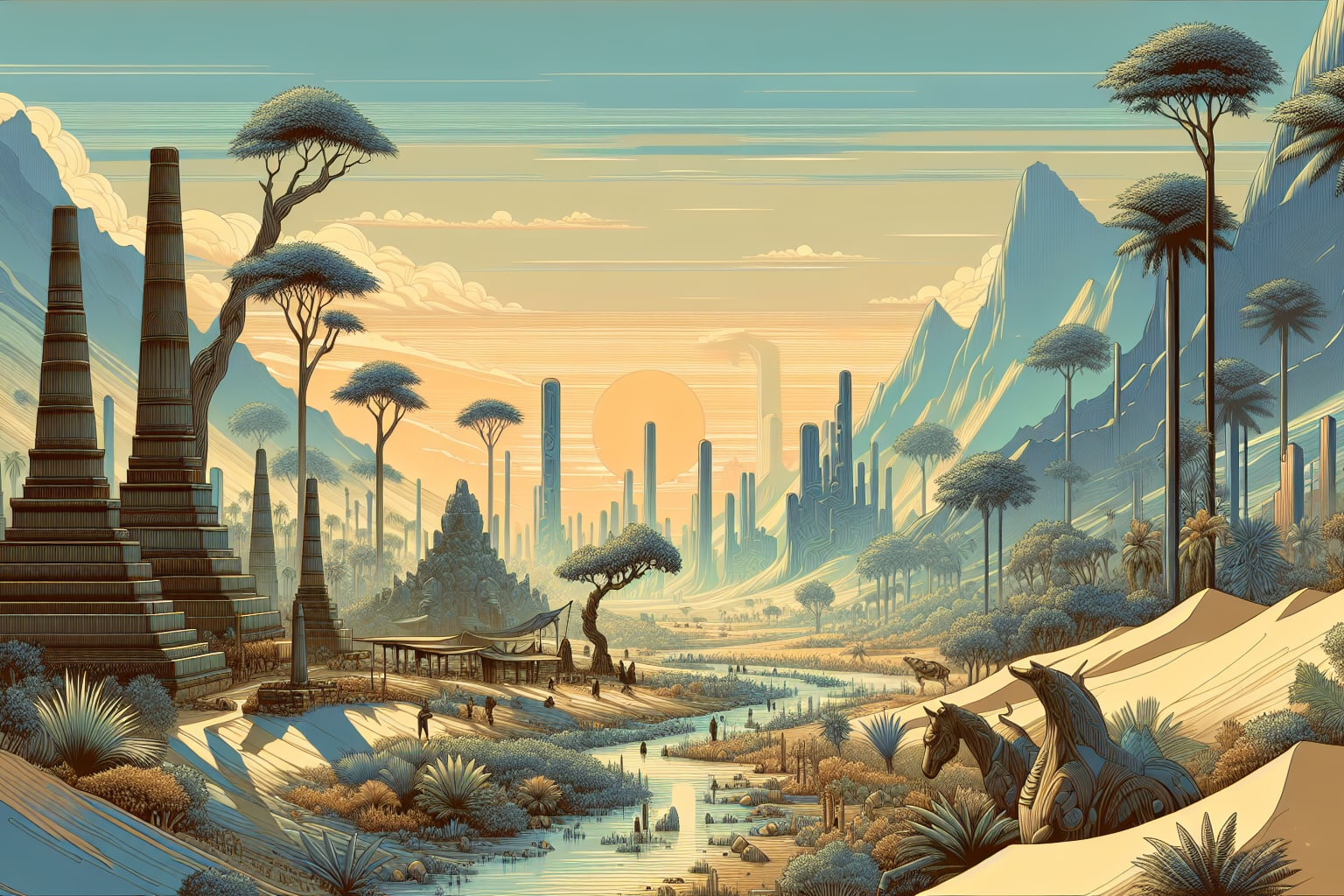
Ancient civilisations

Explanation
upd
11/26/23
Precisely
Simpler
Shorter
Main
Ancient civilizations, which emerged around 4500 BCE, are the cornerstone of our modern societies. These societies, flourishing in Asia, Europe, Africa, and the Americas, were characterized by a high degree of cultural and organizational development. They laid the foundations for many aspects of our contemporary life—from governance and law to science, art, and architecture. For example, the ancient Egyptians, an African civilization, were pioneers not only in architecture, as evidenced by the grandeur of the pyramids, but also in medicine, where they studied the human body and complex medical procedures in detail. Similarly, the Sumerians, one of the earliest civilizations, made significant advances in mathematics, astronomy, and jurisprudence, shaping our modern concepts of time and legal systems. Ancient Greece, in turn, made substantial contributions to philosophy, art, and science, which remain relevant to this day. The teachings of philosophers such as Socrates, Plato, and Aristotle continue to influence contemporary thought, shaping our understanding of ethics, politics, and the nature of knowledge. Ancient China, known for its architectural achievements, built the Great Wall—a testament to an advanced civilization.
Terms
Ancient Civilizations: Societies that existed approximately from 4500 BCE to 476 CE, known for their advanced culture and organization. For example, the Roman Empire (27 BCE - 476 CE) and Ancient Greece (2700 BCE - 479 BCE) had a significant impact on modern law and governance.
Asia: A continent that was home to several ancient civilizations, such as the Sumerians (4500 BCE - 1900 BCE) and the Indus Valley Civilization (3300 BCE - 1300 BCE).
Europe: Another continent rich in ancient civilizations, including the Greeks and Romans. The Colosseum in Rome is a lasting reminder of the architectural and engineering prowess of Roman civilization.
Africa: A continent where ancient Egyptian (3100 BCE - 30 BCE) and Nubian civilizations thrived. The Sphinx in Egypt is an iconic symbol of ancient African civilization.
Americas: Refers to North and South America, where ancient civilizations such as the Maya (1000 BCE - 1520 CE), Aztecs, and Incas lived. Machu Picchu in Peru is a well-preserved city of the Inca civilization.
Analogy
Imagine our modern world as a tree, with ancient civilizations as the soil that nourishes the tree. Just as soil provides the tree with essential nutrients and a stable environment for growth, ancient civilizations provided foundational knowledge and structures that nourish and stabilize our modern societies.
Common Misconception
A common misconception is that ancient civilizations were primitive or less developed than we are today. However, this is far from the truth. For example, the ancient Greeks had a highly organized political system and made significant contributions to philosophy, art, and science, which remain relevant to this day.
History
Ancient civilizations have existed for thousands of years. The Sumerians in Mesopotamia, considered one of the earliest civilizations, emerged around 4500 BCE.
Over time, other civilizations arose in different parts of the world, each contributing uniquely to human history.
For example, Confucius, a philosopher from Ancient China, influenced Eastern thought for over two millennia with his teachings.
Three Ways to Use This Knowledge Right Now
Understanding ancient civilizations can help us appreciate cultural diversity. By studying the customs, beliefs, and practices of ancient civilizations, we can better understand and respect the cultural differences that exist in our modern world. The main benefits of using this knowledge are fostering tolerance and strengthening unity in diversity.
Knowledge of ancient civilizations can help us better understand modern social structures. For example, studying the democratic system of ancient Greece can provide insights into how modern democratic states are organized. The main benefits of using this knowledge are enhancing civic awareness and informed participation in governance.
Ancient civilizations also possess rich knowledge in science and technology. For example, studying the irrigation systems of the ancient Indus Valley civilization can provide valuable lessons for modern water resource management practices. The main benefits of using this knowledge are developing sustainable practices and promoting environmental conservation.
Interesting Facts
The Great Wall of China, built by the ancient Chinese civilization, is so extensive that it can be seen from space.
The ancient Egyptians had a detailed understanding of the human body and practiced complex medical procedures, some of which are still used today.
The ancient Maya civilization had a complex calendar system that accurately predicted astronomical events.
Materials for self-study
300
Will Durant, Ariel Durant @Google Books
1/1/68
+ Suggest a material
Register to Use the Bookmarking Feature
By registering, you can:
Save materials for later (bookmarks)
Track your progress on roadmaps and blocks
Access selected medium and full roadmaps for free
Get notified about new roadmaps
Check exercise
Register to Track Your Progress
By registering, you can:
Save materials for later (bookmarks)
Track your progress on roadmaps and blocks
Access selected medium and full roadmaps for free
Get notified about new roadmaps
Updates
Subscribe to Use Updates Feature
By subscribing, you can:
Access all roadmaps
Access updates for blocks and roadmaps
Get feedback to your answers for exercises
Consult with experts for guidance
Order a custom block or roadmap monthly
Conversation with premium AI
Roadmaps where it's used
Related blocks
Share